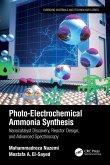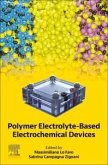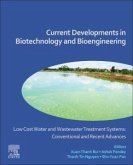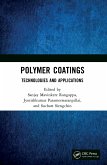Emerging Trends and Advances in Microbial Electrochemical Technologies
Hypothesis, Design, Operation, and Applications
Herausgeber: Yadav, Asheesh Kumar; Noori, Tabish; Srivastava, Pratiksha
Schade – dieser Artikel ist leider ausverkauft. Sobald wir wissen, ob und wann der Artikel wieder verfügbar ist, informieren wir Sie an dieser Stelle.
Emerging Trends and Advances in Microbial Electrochemical Technologies
Hypothesis, Design, Operation, and Applications
Herausgeber: Yadav, Asheesh Kumar; Noori, Tabish; Srivastava, Pratiksha
- Broschiertes Buch
- Merkliste
- Auf die Merkliste
- Bewerten Bewerten
- Teilen
- Produkt teilen
- Produkterinnerung
- Produkterinnerung
Emerging Trends and Advances in Microbial Electrochemical Technologies: Hypothesis, Design, Operation and Applications provides a lab to field approach involved in the progress of microbial electrochemical technologies. Focusing on recent trends and advances in this rapidly growing field, the book provides comprehensive information on the basics while also explaining new approaches to microbial electrochemical technologies for environmental applications, including wastewater and waste treatment, bioremediation of contaminated sites, resource recovery, usable electricity generation, greenhouse…mehr
Andere Kunden interessierten sich auch für
![Photo-Electrochemical Ammonia Synthesis Photo-Electrochemical Ammonia Synthesis]() Mohammadreza NazemiPhoto-Electrochemical Ammonia Synthesis100,99 €
Mohammadreza NazemiPhoto-Electrochemical Ammonia Synthesis100,99 €![Polymer Electrolyte-Based Electrochemical Devices Polymer Electrolyte-Based Electrochemical Devices]() Polymer Electrolyte-Based Electrochemical Devices185,99 €
Polymer Electrolyte-Based Electrochemical Devices185,99 €![Electrochemical Engineering Principles Electrochemical Engineering Principles]() Geoffrey PrenticeElectrochemical Engineering Principles90,99 €
Geoffrey PrenticeElectrochemical Engineering Principles90,99 €![Plunkett's Chemicals, Coatings & Plastics Industry Almanac 2024: Chemicals, Coatings & Plastics Industry Market Research, Statistics, Trends and Leadi Plunkett's Chemicals, Coatings & Plastics Industry Almanac 2024: Chemicals, Coatings & Plastics Industry Market Research, Statistics, Trends and Leadi]() Jack W. PlunkettPlunkett's Chemicals, Coatings & Plastics Industry Almanac 2024: Chemicals, Coatings & Plastics Industry Market Research, Statistics, Trends and Leadi403,99 €
Jack W. PlunkettPlunkett's Chemicals, Coatings & Plastics Industry Almanac 2024: Chemicals, Coatings & Plastics Industry Market Research, Statistics, Trends and Leadi403,99 €![Low Cost Water and Wastewater Treatment Systems: Conventional and Recent Advances Low Cost Water and Wastewater Treatment Systems: Conventional and Recent Advances]() Low Cost Water and Wastewater Treatment Systems: Conventional and Recent Advances212,99 €
Low Cost Water and Wastewater Treatment Systems: Conventional and Recent Advances212,99 €![Polymer Coatings: Technologies and Applications Polymer Coatings: Technologies and Applications]() Polymer Coatings: Technologies and Applications80,99 €
Polymer Coatings: Technologies and Applications80,99 €
Emerging Trends and Advances in Microbial Electrochemical Technologies: Hypothesis, Design, Operation and Applications provides a lab to field approach involved in the progress of microbial electrochemical technologies. Focusing on recent trends and advances in this rapidly growing field, the book provides comprehensive information on the basics while also explaining new approaches to microbial electrochemical technologies for environmental applications, including wastewater and waste treatment, bioremediation of contaminated sites, resource recovery, usable electricity generation, greenhouse gas emissions reduction and bio-sensing. Explaining current trends and advances in practice, and elaborating on realistic technological areas and commercialization possibilities and large-scale applications, this book provides new insights into the design of microbial electrochemical technologies and future directions.
Produktdetails
- Produktdetails
- Verlag: Elsevier Inc
- Seitenzahl: 925
- Erscheinungstermin: 15. August 2024
- Englisch
- Abmessung: 229mm x 152mm x 44mm
- Gewicht: 1148g
- ISBN-13: 9780443155574
- ISBN-10: 0443155577
- Artikelnr.: 68505555
- Herstellerkennzeichnung
- Libri GmbH
- Europaallee 1
- 36244 Bad Hersfeld
- 06621 890
- Verlag: Elsevier Inc
- Seitenzahl: 925
- Erscheinungstermin: 15. August 2024
- Englisch
- Abmessung: 229mm x 152mm x 44mm
- Gewicht: 1148g
- ISBN-13: 9780443155574
- ISBN-10: 0443155577
- Artikelnr.: 68505555
- Herstellerkennzeichnung
- Libri GmbH
- Europaallee 1
- 36244 Bad Hersfeld
- 06621 890
Section 1. Fundamentals and new knowledge in the field of METs 1. Micobial
Electrochemcial Technology: Historical development, principles and
applications, technological readiness level 2. Emerging wastewater
treatment technologies based on the integration of biological and
bioelectrochemical processes 3. Bioelectrochemical characterization
techniques for enhanced understanding of METs 4. Electron Transition and
Losses in Bioelectrochemical System Towards CO2 Sequestration 5. Life cycle
analysis and life cycle cost analysis in METs to the evaluate feasibility
of the device to fit into the circular economy concept Section 2. Current
and emerging applications of Microbial Electrochemical Technology (MET) 6.
Nutrient Recovery in Bioelectrochemical systems 7. Bioelectrochemical
sensors for detecting recalcitrant and toxic organic pollutants 8. Purple
bacteria and their possible application in Microbial Electrochemical
Technologies for environmental treatment applications and resource recovery
9. Robust application of microbial electrochemical technology coupled with
constructed wetlands Section 3. Current and new trends in the
electrochemical synthesis using Microbial Electrochemical Technology 10.
Biogas upgradation using integrated anaerobic digestion and microbial
electrochemical technologies 11. Gas electro-fermentation in METs. 12.
Recent Advancements in Photocatalytic Materials for Applications in
Photo-Assisted Microbial Electrosynthesis 13. Physiochemical and biological
techniques in wastewater treatment with an emphasis on algal microbial fuel
cell Section 4. Current and emerging new design, materials and operating
conditions in Microbial electrochemical Technology 14. An overview of
current and emerging design of Microbial electrochemical Technology 15.
Fluidized and fixed granular beds of activated carbon as electrodes in METs
16. Nanomaterials to facilitate extracellular electron transfer in
microbial electrochemical systems 17. An overview of different
separators/membranes used in METs 18. MOFs and other emergent cathode
catalysts in METs 19. Functional materials coated gas diffusion electrodes
for enhanced value-added product recovery in MECs 20. E-Waste-derived
materials for resource recovery and wastewater treatment applications
Section 5. Current and emerging trends in wastewater treatment,
bioremediation, biosensing and resource recovery using Microbial
Electrochemical Technology 21. Osmotic microbial fuel cell (OMFC) as an
energy-self-sufficient wastewater treatment 22. Algae-powered versatile
microbial fuel cells for energy and resource recovery from different waste
streams. 23. Application of bioelectrochemical coagulation process for
leachate treatment 24. Electrochemical approaches with novel electrodes to
treat emerging contaminants in water and water streams Section 6. Updates
in scale-up of METs and commercialization 25. Scale-up challenges in METs
for commercial applications 26. Real-life Applications of Sediment
Microbial Fuel Cell (SMFC) for power generation to operate aquaculture
ponds 27. Full-scale commercial applications of Plant-MFCs for producing
electricity 28. Electrobioremediation of contaminated sediments
Electrochemcial Technology: Historical development, principles and
applications, technological readiness level 2. Emerging wastewater
treatment technologies based on the integration of biological and
bioelectrochemical processes 3. Bioelectrochemical characterization
techniques for enhanced understanding of METs 4. Electron Transition and
Losses in Bioelectrochemical System Towards CO2 Sequestration 5. Life cycle
analysis and life cycle cost analysis in METs to the evaluate feasibility
of the device to fit into the circular economy concept Section 2. Current
and emerging applications of Microbial Electrochemical Technology (MET) 6.
Nutrient Recovery in Bioelectrochemical systems 7. Bioelectrochemical
sensors for detecting recalcitrant and toxic organic pollutants 8. Purple
bacteria and their possible application in Microbial Electrochemical
Technologies for environmental treatment applications and resource recovery
9. Robust application of microbial electrochemical technology coupled with
constructed wetlands Section 3. Current and new trends in the
electrochemical synthesis using Microbial Electrochemical Technology 10.
Biogas upgradation using integrated anaerobic digestion and microbial
electrochemical technologies 11. Gas electro-fermentation in METs. 12.
Recent Advancements in Photocatalytic Materials for Applications in
Photo-Assisted Microbial Electrosynthesis 13. Physiochemical and biological
techniques in wastewater treatment with an emphasis on algal microbial fuel
cell Section 4. Current and emerging new design, materials and operating
conditions in Microbial electrochemical Technology 14. An overview of
current and emerging design of Microbial electrochemical Technology 15.
Fluidized and fixed granular beds of activated carbon as electrodes in METs
16. Nanomaterials to facilitate extracellular electron transfer in
microbial electrochemical systems 17. An overview of different
separators/membranes used in METs 18. MOFs and other emergent cathode
catalysts in METs 19. Functional materials coated gas diffusion electrodes
for enhanced value-added product recovery in MECs 20. E-Waste-derived
materials for resource recovery and wastewater treatment applications
Section 5. Current and emerging trends in wastewater treatment,
bioremediation, biosensing and resource recovery using Microbial
Electrochemical Technology 21. Osmotic microbial fuel cell (OMFC) as an
energy-self-sufficient wastewater treatment 22. Algae-powered versatile
microbial fuel cells for energy and resource recovery from different waste
streams. 23. Application of bioelectrochemical coagulation process for
leachate treatment 24. Electrochemical approaches with novel electrodes to
treat emerging contaminants in water and water streams Section 6. Updates
in scale-up of METs and commercialization 25. Scale-up challenges in METs
for commercial applications 26. Real-life Applications of Sediment
Microbial Fuel Cell (SMFC) for power generation to operate aquaculture
ponds 27. Full-scale commercial applications of Plant-MFCs for producing
electricity 28. Electrobioremediation of contaminated sediments
Section 1. Fundamentals and new knowledge in the field of METs 1. Micobial
Electrochemcial Technology: Historical development, principles and
applications, technological readiness level 2. Emerging wastewater
treatment technologies based on the integration of biological and
bioelectrochemical processes 3. Bioelectrochemical characterization
techniques for enhanced understanding of METs 4. Electron Transition and
Losses in Bioelectrochemical System Towards CO2 Sequestration 5. Life cycle
analysis and life cycle cost analysis in METs to the evaluate feasibility
of the device to fit into the circular economy concept Section 2. Current
and emerging applications of Microbial Electrochemical Technology (MET) 6.
Nutrient Recovery in Bioelectrochemical systems 7. Bioelectrochemical
sensors for detecting recalcitrant and toxic organic pollutants 8. Purple
bacteria and their possible application in Microbial Electrochemical
Technologies for environmental treatment applications and resource recovery
9. Robust application of microbial electrochemical technology coupled with
constructed wetlands Section 3. Current and new trends in the
electrochemical synthesis using Microbial Electrochemical Technology 10.
Biogas upgradation using integrated anaerobic digestion and microbial
electrochemical technologies 11. Gas electro-fermentation in METs. 12.
Recent Advancements in Photocatalytic Materials for Applications in
Photo-Assisted Microbial Electrosynthesis 13. Physiochemical and biological
techniques in wastewater treatment with an emphasis on algal microbial fuel
cell Section 4. Current and emerging new design, materials and operating
conditions in Microbial electrochemical Technology 14. An overview of
current and emerging design of Microbial electrochemical Technology 15.
Fluidized and fixed granular beds of activated carbon as electrodes in METs
16. Nanomaterials to facilitate extracellular electron transfer in
microbial electrochemical systems 17. An overview of different
separators/membranes used in METs 18. MOFs and other emergent cathode
catalysts in METs 19. Functional materials coated gas diffusion electrodes
for enhanced value-added product recovery in MECs 20. E-Waste-derived
materials for resource recovery and wastewater treatment applications
Section 5. Current and emerging trends in wastewater treatment,
bioremediation, biosensing and resource recovery using Microbial
Electrochemical Technology 21. Osmotic microbial fuel cell (OMFC) as an
energy-self-sufficient wastewater treatment 22. Algae-powered versatile
microbial fuel cells for energy and resource recovery from different waste
streams. 23. Application of bioelectrochemical coagulation process for
leachate treatment 24. Electrochemical approaches with novel electrodes to
treat emerging contaminants in water and water streams Section 6. Updates
in scale-up of METs and commercialization 25. Scale-up challenges in METs
for commercial applications 26. Real-life Applications of Sediment
Microbial Fuel Cell (SMFC) for power generation to operate aquaculture
ponds 27. Full-scale commercial applications of Plant-MFCs for producing
electricity 28. Electrobioremediation of contaminated sediments
Electrochemcial Technology: Historical development, principles and
applications, technological readiness level 2. Emerging wastewater
treatment technologies based on the integration of biological and
bioelectrochemical processes 3. Bioelectrochemical characterization
techniques for enhanced understanding of METs 4. Electron Transition and
Losses in Bioelectrochemical System Towards CO2 Sequestration 5. Life cycle
analysis and life cycle cost analysis in METs to the evaluate feasibility
of the device to fit into the circular economy concept Section 2. Current
and emerging applications of Microbial Electrochemical Technology (MET) 6.
Nutrient Recovery in Bioelectrochemical systems 7. Bioelectrochemical
sensors for detecting recalcitrant and toxic organic pollutants 8. Purple
bacteria and their possible application in Microbial Electrochemical
Technologies for environmental treatment applications and resource recovery
9. Robust application of microbial electrochemical technology coupled with
constructed wetlands Section 3. Current and new trends in the
electrochemical synthesis using Microbial Electrochemical Technology 10.
Biogas upgradation using integrated anaerobic digestion and microbial
electrochemical technologies 11. Gas electro-fermentation in METs. 12.
Recent Advancements in Photocatalytic Materials for Applications in
Photo-Assisted Microbial Electrosynthesis 13. Physiochemical and biological
techniques in wastewater treatment with an emphasis on algal microbial fuel
cell Section 4. Current and emerging new design, materials and operating
conditions in Microbial electrochemical Technology 14. An overview of
current and emerging design of Microbial electrochemical Technology 15.
Fluidized and fixed granular beds of activated carbon as electrodes in METs
16. Nanomaterials to facilitate extracellular electron transfer in
microbial electrochemical systems 17. An overview of different
separators/membranes used in METs 18. MOFs and other emergent cathode
catalysts in METs 19. Functional materials coated gas diffusion electrodes
for enhanced value-added product recovery in MECs 20. E-Waste-derived
materials for resource recovery and wastewater treatment applications
Section 5. Current and emerging trends in wastewater treatment,
bioremediation, biosensing and resource recovery using Microbial
Electrochemical Technology 21. Osmotic microbial fuel cell (OMFC) as an
energy-self-sufficient wastewater treatment 22. Algae-powered versatile
microbial fuel cells for energy and resource recovery from different waste
streams. 23. Application of bioelectrochemical coagulation process for
leachate treatment 24. Electrochemical approaches with novel electrodes to
treat emerging contaminants in water and water streams Section 6. Updates
in scale-up of METs and commercialization 25. Scale-up challenges in METs
for commercial applications 26. Real-life Applications of Sediment
Microbial Fuel Cell (SMFC) for power generation to operate aquaculture
ponds 27. Full-scale commercial applications of Plant-MFCs for producing
electricity 28. Electrobioremediation of contaminated sediments







